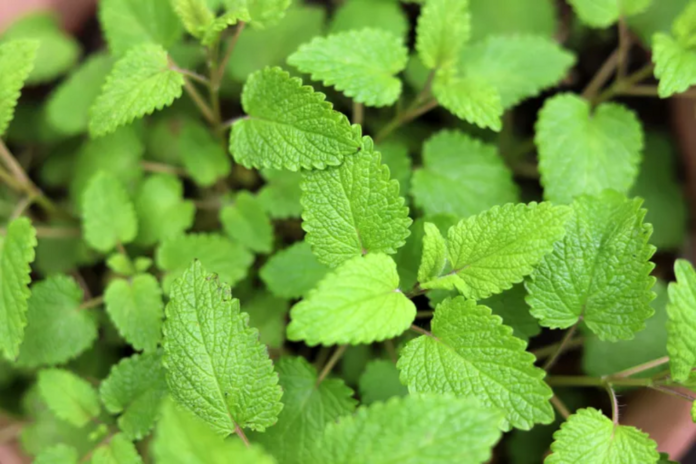Earning the title of Herb of the Year in 2007 by the International Herb Association, lemon balm is a hidden gem of the herb gardening world. All mints have the reputation of being easy to grow, and this variety is no different. Just add a single plant to your garden, and it’ll come back (and possibly multiply) year after year.
Lemon balm can be used as an insect repellent, to make your own herbal tea, and to attract bees. It has been used for medicinal and healing purposes, as well. It really doesn’t take much effort to be successful with this lovely-smelling plant. Here are a few tips on how to plant, grow, and care for lemon balm.
Botanical name Melissa officinalis
Common name Lemon balm, sweet balm, honey plant
Plant type Perennial
Size 1-2 feet
Sun exposure Full sun to partial shade
Soil type All types
Soil pH Neutral
Time to mature 65-70 days
Flower color White
Hardiness Zones3-12
Native AreaSouthern Europe
ToxicityNon-toxic
How to Plant Lemon Balm
You can easily grow lemon balm from seeds or plants. If growing from seeds, either start them indoors for faster germination or plant directly into the soil after the danger of frost has passed. If your seeds don’t sprout right away, don’t give up; they can take a little bit to get going.
Plant in full sun with some light shade in spring, mid-summer, or even late summer—or all three if you want to keep your supply going for a longer period of time. You can also grow lemon balm indoors pretty much year-round, along with several other herbs. Once they get going, thin plants so they are about 10 inches apart. If you want to harvest for cooking or to make your own tea, you’ll want to grow at least four plants.
Lemon balm works great directly on the ground or in containers. Keep in mind that this plant spreads easily and can quickly take over a garden area. Containers make a great option for keeping the plant controlled. Plus, you can easily grow four to six plants in a single, large container.
Lemon Balm Care
While lemon balm will tolerate some drought, it prefers regular waterings in well-draining soil and bright conditions. Indoors, you might even consider misting it every few days to help it thrive.
This herb will likely come back year after year, especially if you grow it in the ground and you have the right conditions—it tends to prefer cooler temps, so it might be more challenging in heat or humidity. However, you can also grow it as an annual. Bees and other pollinators love it, so you might even consider adding it to a butterfly garden or container recipe.
Similar to other herbs, you can harvest lemon balm leaves at pretty much any time, even when they are young. If you want to have a large harvest, pick the leaves off just before the plant has reached full maturity.
Common Pests and Diseases
For the most part, lemon balm is disease-resistant, which is why so many gardeners love taking it on. But there are still some things to watch out for. Root rot and powdery mildew can occur due to too much watering or poor drainage. It can be easy to water plants too much or too frequently. Instead of watering lemon balm daily, try every few days. When you water it deeply instead of frequently, you’ll set it up for long-term success.
Benefits of Growing Lemon Balm
There are so many ways to use lemon balm from the garden—and it serves not only you but the wildlife in your area, as well.
Lemon Balm and Bees
Lemon balm is a great source of nectar, so it’s a good plant for butterflies, hummingbirds, and especially bees. In fact, beekeepers have been growing lemon balm near new hives for years as a way to attract them there. It even goes by the common name of bee balm sometimes—although this is not to be confused with the red perennial called bee balm, known botanically as Monarda.
Lemon Balm for Tea
Lemon balm tea is known to help with digestion, nerves, and stress; it is also recommended as a good drink for cold and flu season. You can use fresh or dried leaves to make tea. For fresh, gather roughly 15-20 leaves and steep them with water. Then, add whatever you like drinking with your tea—honey, sugar, or other sweeteners. If you go with dried leaves instead, you can enjoy lemon balm tea in any season.
Lemon Balm as an Inspect Repellent
Why does lemon balm drive away insects? The leaves carry citronellal, which comes off as unpleasant to mosquitoes and other bugs. You can crush the leaves and rub the oils on your own skin as a quick, easy, and natural backyard repellent. Or you can make a DIY lemon balm insect repellent to use during the buggiest times of the year. Some mix multiple herbs together when concocting a repellent; lemon balm is always one of the main ingredient.
Other Uses for Lemon Balm
Like other herbs, lemon balm can be used to make your own soap, lip balm, room spray, and many other homemade goods. If you like creating your own beauty products, consider using lemon balm for a bath soak, facial treatment, or lip scrub. The smell is great, and the potential benefits are plenty. Check with your favorite local health store or herbalist to learn more.

